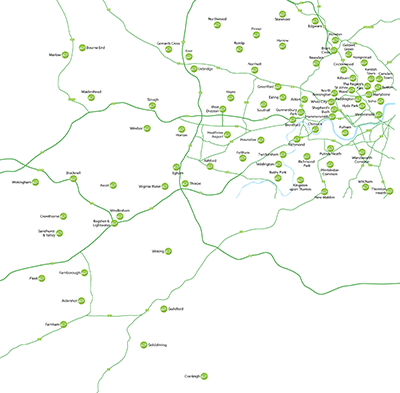West London Pest Control - Woodworm Control, Woodworm Treatments & Woodworm Surveys in West London
When it comes to dealing with woodworm, there is a common misconception which the name is wholly responsible for – the woodworm is not a ‘worm’; it is a beetle. In the UK, there are 4 different species of woodworm – the common furniture beetle, the deathwatch beetle, the house longhorn beetle and the powderpost beetle.
All four of the aforementioned beetles will – and do – invade and eat all kinds of wooden items of furniture, from a piano stool to the wooden frame of a chair. It is the larvae of the woodworm that causes those tell-tale pin-head sized holes; when they reach maturity, the beetle simple leave.



Is it woodworm?
Some homes have woodworm in furniture, skirting boards and other wooden features without the homeowner being aware. Infected with eggs or larvae unnoticed by you can go on for several years. Many people also think that this type of infestation is only really found in older properties but, modern and new build homes are as at much risk!
Are cases of woodworm ‘infestations’ on the increase?
It is hard to tell if there are more cases of woodworm but generally speaking, we are becoming less tolerant of pests in our homes and so, even though the woodworm presents no danger to our health, at the first signs of what we think is woodworm, we are tending to call pest control companies to deal with it.
Leaving woodworm in important structures such as roof trusses and the like, can lead to their strength and integrity eventually being compromised.
Experts also think that the modern day trend of buying second hand or upcycled furniture has also become a way that woodworm is introduced into a property, so check any second hand or upcycled wooden items carefully!
The signs of a woodworm infestation
There are many signs which you may spot on items…
- Small, pin-head sized holes dotted around the surface of a wooden item or structure
- In ‘live’ infestation, you may also notice small piles of dust, known as frass
- Some wooden items can appear or be ‘crumbly’ or soft
- You may see an adult beetle emerging
- No holes but lots of dust or frass? It still could be woodworm…
Finding these signs are all indications of woodworm BUT, it may be that the larvae has already done its damage and emerge as an adult; without exploring further, it is difficult to know if it is a ‘live’ infestation or not.
A pest controller can help
As qualified and experienced technicians, we know the routine and habits of all kinds of pests, including the woodworm.
Woodworm beetles emerge from wood during the mating season, from May to September each year. Cover any holes you have found with masking tape or paint during the winter months is a way of detecting for disturbance in the spring; if there are holes in the tape or paint, you know you have a live woodworm infestation.
Avoiding woodworm
Although they do not cause us harm or spread disease, no one want to share their furniture or home with a wood eating beetle. Prevention of woodworm can be relatively simple but remember, all properties are susceptible…
- Woodworms prefer moist wood, with a humidity level of 18% or higher – if you have experienced damp or moisture in a property, keep an eye on wooden structures. Knowing that woodworm can survive in direr wood for up to 12 months means this ‘keeping an eye on things’ need to be vigilant for 12 to 18 months.
- Spot the signs in furniture? – remove anything non-structural as soon as you can, but especially before the spring months
- Woodworm ‘traps’ – it is possible to invest in relatively simple and inexpensive ‘sticky traps’ that trap the merging beetles, preventing re-infestation by mated beetles
Stop it spreading now and save yourself a whole heap of stress and money!
Woodworm in a property is not good news but, buying in the services of a qualified, reputable pest control company is a great step in ‘saving’ the wood in a property. Woodworm ‘infestations’ do not go away on their own; it takes a knowledgeable approach to identify the woodworm and getting rid of it.
We can deal with woodworm infestation quickly and easily; call us for a free, no obligation on-site quotation!







 for W areas
for W areas





